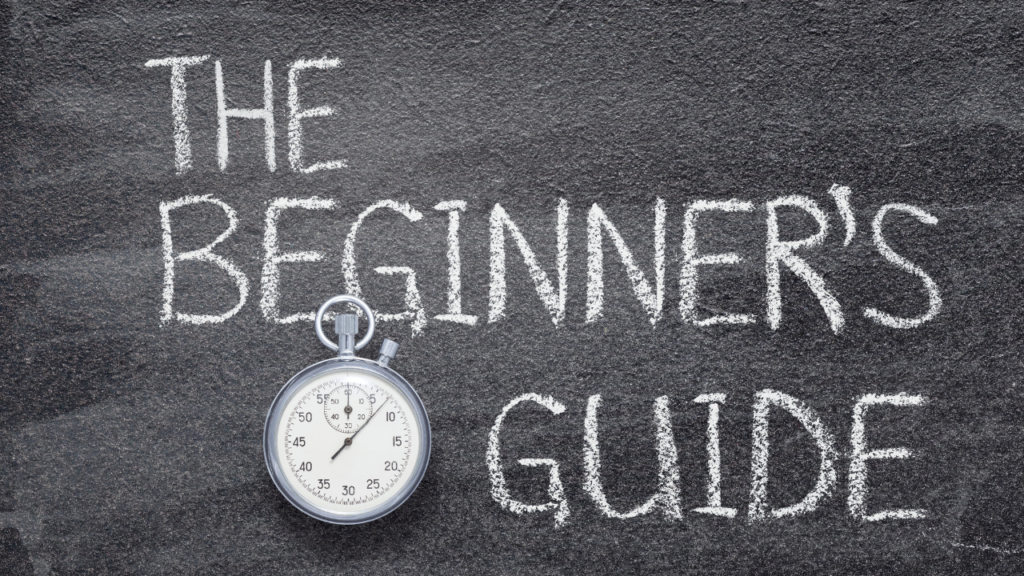The time it takes to become proficient at golf varies greatly depending on several factors, including your dedication, practice routine, natural athletic ability, and access to quality instruction.

While there isn’t a one-size-fits-all answer, here’s a realistic timeline for beginners to progress in golf:
Learning the Basics (0-6 months): In this initial stage, beginners focus on learning the fundamental skills and rules of golf. This includes understanding grip, stance, posture, and basic swing mechanics. Taking lessons from a qualified instructor or participating in beginner clinics can accelerate progress during this phase.
Developing Consistency (6 months – 1 year): As you continue to practice, the goal is to develop more consistency in your swing and ball-striking. You’ll spend time refining your technique, working on accuracy and distance control with different clubs. Regular practice, including time spent on the driving range and short game areas, is crucial at this stage.
Improving Course Management (1-2 years): Once you feel comfortable with the basics, you can start focusing on course management skills. This involves understanding shot selection, reading the course, and making strategic decisions during play. Playing rounds of golf regularly will help you gain experience and confidence on the course.
Refining Skills (2-3 years): By this point, you should have a solid foundation in golf fundamentals. You can now focus on refining your skills and addressing specific areas of weakness. This might include improving your short game (chipping, pitching, putting), honing your ball-striking consistency, and developing a pre-shot routine.
Achieving Consistent Performance (3-5 years): With continued practice and dedication, you can expect to achieve a level of consistent performance where you’re able to shoot scores that reflect your skill level. This doesn’t mean every round will be perfect, but you’ll have the ability to manage your game effectively and make adjustments as needed during play.
Continual Improvement (5+ years): Even after reaching a competent level, golf remains a game of continual improvement. Many golfers spend a lifetime refining their skills, seeking out new challenges, and striving to lower their handicap. The key is to stay patient, enjoy the process, and never stop learning.
Remember, progress in golf is not always linear, and there will be ups and downs along the way. Stay patient, stay focused on your goals, and enjoy the journey of improvement.
Read More: Five tips from one of the best putters in golf on how to improve your game.
Read More: Why do golf courses have 18 holes?
Read More: Here are the three golf holes in Illinois that will be used for the 2024 U.S. Open qualifiers.
Figuring out the speed of learning

Understanding the learning curve in golf, as in any skill, involves recognizing that progress is not always linear and that improvement tends to happen in stages.
Here’s how the learning curve typically applies to learning golf:
Initial Rapid Progress: Beginners often experience rapid improvement in the early stages of learning golf. This progress can be attributed to becoming familiar with the basic mechanics of the swing, making initial adjustments, and seeing noticeable improvements in distance and accuracy.
Plateauing: After the initial surge of progress, it’s common for golfers to reach a plateau where improvement seems to stall. This phase can be frustrating as you may feel like you’re not making any significant advancements despite continued practice and effort. Plateauing is a natural part of the learning process and can occur for various reasons, such as technical flaws, mental barriers, or physical limitations.
Breakthroughs: Despite plateaus, dedicated practice and perseverance can lead to breakthrough moments where you suddenly make significant strides in your game. These breakthroughs may come after a period of struggle or when you least expect them. They often result from identifying and addressing weaknesses, gaining a deeper understanding of the game, or making subtle adjustments to your technique.
Consolidation of Skills: As you continue to progress, you’ll reach a point where your skills become more consolidated, and you can perform consistently at a certain level. This stage involves refining your technique, improving your decision-making on the course, and developing a deeper understanding of your strengths and weaknesses as a golfer.
Continuous Improvement: Even after reaching a competent level, the learning curve in golf remains ongoing. There’s always room for improvement, whether it’s refining your swing mechanics, mastering different shot types, or sharpening your mental game. The key to continuous improvement is staying committed to practice, seeking out quality instruction, and remaining open to learning new skills and strategies.
Understanding the learning curve in golf can help you navigate the ups and downs of the learning process more effectively. By recognizing that improvement takes time and patience, you can stay motivated, set realistic goals, and enjoy the journey of becoming a better golfer.
Read More: The world’s five hardest golf courses.
Read More: Lee Trevino shows you how to hit the golf ball fairly well.
Read More: What number of greens does the average golfer hit?
Factors that affect how quickly you learn to play golf

Several factors influence the pace of skill development in golf. Understanding these factors can help you set realistic expectations and make informed decisions about how to approach your practice and improvement efforts.
Here are some key factors:
Natural Ability: Some individuals may have a natural predisposition for golf due to factors such as hand-eye coordination, athleticism, and physical fitness. Those with greater natural ability may progress more quickly than others, especially in the early stages of learning.
Dedication and Practice: The amount and quality of practice you put in play a significant role in skill development. Regular, focused practice sessions, both on the driving range and on the course, are essential for improvement. Consistency and dedication over time can lead to significant advancements in skill level.
Quality Instruction: Working with a knowledgeable and experienced golf instructor can accelerate your learning curve by providing personalized feedback, guidance, and instruction tailored to your specific needs and goals. A good instructor can help you identify and correct swing flaws, develop effective practice routines, and improve your overall understanding of the game.
Equipment and Technology: Utilizing modern golf equipment and technology, such as launch monitors, swing analyzers, and video feedback systems, can enhance your learning process. These tools provide valuable data and insights into your swing mechanics, ball flight, and performance, allowing you to make more informed adjustments and improvements.
Physical Fitness and Flexibility: Golf requires a certain level of physical fitness and flexibility to execute the necessary movements and maintain consistency in your swing. Improving your strength, flexibility, and overall conditioning through targeted exercise and fitness training can positively impact your golf performance and speed up skill development.
Mental Approach: Golf is as much a mental game as it is physical. Developing mental toughness, focus, and resilience can help you navigate the challenges of learning and improve your performance on the course. Techniques such as visualization, goal setting, and mindfulness can contribute to a more effective learning process and faster skill development.
Playing Experience: Time spent playing rounds of golf on the course is invaluable for skill development. The more experience you gain in different playing conditions, the better you’ll become at managing your game, making strategic decisions, and adapting to various situations. Regularly playing competitive rounds, whether in casual or formal settings, can help accelerate your progress.
By considering these factors and incorporating them into your approach to learning and practicing golf, you can optimize your skill development and progress more efficiently toward your goals. Remember that improvement takes time and patience, so stay committed to the process and enjoy the journey of becoming a better golfer.
Besides the scorecard

Beyond the scorecard, golf offers numerous benefits and experiences that contribute to personal growth, enjoyment, and well-being.
Here are some aspects of golf that extend beyond the numbers on the scorecard:
Physical Fitness: Golf is a physically demanding sport that provides an excellent opportunity for exercise and activity. Walking the course, swinging the club, and carrying or pulling your clubs all contribute to cardiovascular health, muscle strength, and flexibility. Regular golfing can help improve overall fitness levels and contribute to a healthier lifestyle.
Social Interaction: Golf is often played in groups, providing ample opportunities for social interaction and connection with others. Whether playing with friends, family, colleagues, or fellow golfers, the shared experience of golfing fosters camaraderie, conversation, and the building of relationships. Golf outings can be a great way to network, bond, and enjoy quality time with others.
Mindfulness and Relaxation: Golf is known for its tranquil and scenic settings, offering players a chance to escape from the stresses of everyday life and connect with nature. Spending time outdoors on the golf course can promote relaxation, mindfulness, and stress relief. The rhythmic nature of the game, combined with the focus required for each shot, can also promote mental clarity and concentration.
Problem-Solving and Decision-Making: Golf presents players with a series of challenges and decisions to navigate throughout the course. From selecting the right club and shot strategy to adjusting to changing weather and course conditions, golf requires problem-solving skills, adaptability, and strategic thinking. Learning to make decisions under pressure on the golf course can translate to improved decision-making abilities in other areas of life.
Personal Growth: Golf is a sport that offers continuous opportunities for learning, improvement, and personal growth. Overcoming challenges, embracing failure, and persevering through setbacks are all part of the journey toward becoming a better golfer. The lessons learned on the golf course, such as resilience, patience, and self-discipline, can be applied to other areas of life, contributing to personal development and growth.
Environmental Stewardship: Golf courses are often situated in natural landscapes and serve as habitats for diverse wildlife and plant species. Many golf courses prioritize environmental sustainability and conservation efforts, including water conservation, habitat restoration, and eco-friendly course management practices. Playing golf can foster a greater appreciation for the environment and promote awareness of the importance of conservation efforts.
Overall, golf offers a rich and multifaceted experience that extends beyond simply keeping score. Whether you’re enjoying the physical challenge, the social aspect, or the mental engagement of the game, golf has something to offer players of all ages and abilities.
Read More: USGA and R&A say that everyone, not just professional players, will be able to play with golf balls that are rounder.
Read More: Golf balls will be rolled back by the USGA and the R&A for both pros and amateurs: report.
Read More: Scratch Golf Mastery: Insights and Strategies for Playing Like a Pro and Achieving Scratch Golfer Status
Journey, not endpoint

“The journey, not the destination” is a phrase that encapsulates the idea that the process of achieving a goal is often more meaningful and fulfilling than the goal itself. In the context of golf, this phrase emphasizes the importance of enjoying the experience of playing the game and embracing the learning and growth that come with it, rather than solely focusing on achieving a specific score or outcome.
Here’s how this concept applies to golf:
Learning and Improvement: Golf is a sport that requires ongoing learning and skill development. Embracing the journey of improvement means recognizing that progress takes time and dedication. Instead of fixating solely on achieving a certain handicap or winning tournaments, golfers can focus on the satisfaction of learning new techniques, overcoming challenges, and seeing gradual improvement in their game.
Mindfulness and Presence: Golf offers players the opportunity to be fully present and engaged in the moment. By focusing on the journey of each shot, hole, and round, golfers can cultivate mindfulness and awareness on the course. This can lead to a deeper appreciation of the natural surroundings, the camaraderie of playing with others, and the satisfaction of executing well-played shots.
Enjoyment and Recreation: Ultimately, golf is meant to be enjoyed as a recreational activity. Whether playing competitively or casually, golfers can find fulfillment in the simple pleasures of spending time outdoors, getting exercise, and sharing experiences with friends and family. By embracing the journey of golf, players can maintain a sense of perspective and balance, prioritizing enjoyment and fulfillment over the pressure to achieve specific outcomes.
Personal Growth and Character Development: The journey of playing golf offers numerous opportunities for personal growth and character development. Facing challenges, coping with adversity, and persevering through setbacks are all part of the learning process in golf. By embracing the journey, golfers can cultivate resilience, patience, and self-discipline, which can have positive effects both on and off the course.
In essence, “the journey, not the destination” encourages golfers to focus on the process of playing and improving, rather than solely on achieving external markers of success. By embracing the journey of golf, players can derive greater fulfillment, enjoyment, and personal growth from their experiences on the course.









